Buzzers offer an effective and affordable way to provide communication between an electronic product and a user. In this blog post, CUI Devices walks through the differences of magnetic and piezo buzzers and how to choose which one is right for your application. Here you can learn more about the differences between these buzzer types including their construction, voltage, current, sound pressure level (SPL) capability and more.
There are many choices for communicating information between a product and the user. One of the most common choices for audio communication is a buzzer. Understanding some of the technologies and configurations of buzzers is useful during the design process, so, in this blog post, CUI Devices describes typical configurations, provides example buzzer tones, and presents common drive circuit options.
Magnetic and Piezo Buzzers
The two most common technologies used in buzzer designs are magnetic and piezo. Many applications use either a magnetic or a piezo buzzer, but the decision regarding which of the two technologies to use is based upon many different constraints. Magnetic buzzers operate at lower voltages and higher currents (1.5~12 V, > 20 mA) compared to piezo buzzers (12~220 V, < 20 mA), while piezo buzzers often have greater maximum sound pressure level (SPL) capability than magnetic buzzers. However, it should be noted that the greater SPL available from piezo buzzers requires larger footprints.
In a magnetic buzzer, a current is driven through a coil of wire which produces a magnetic field. A flexible ferromagnetic disk is attracted to the coil when the current is present and returns to a "rest" position when the current is not flowing through the coil. The sound from a magnetic buzzer is produced by the movement of the ferromagnetic disk in a similar manner to how the cone in a speaker produces sound. A magnetic buzzer is a current driven device, but the power source is typically a voltage. The current through the coil is determined by the applied voltage and the impedance of the coil.
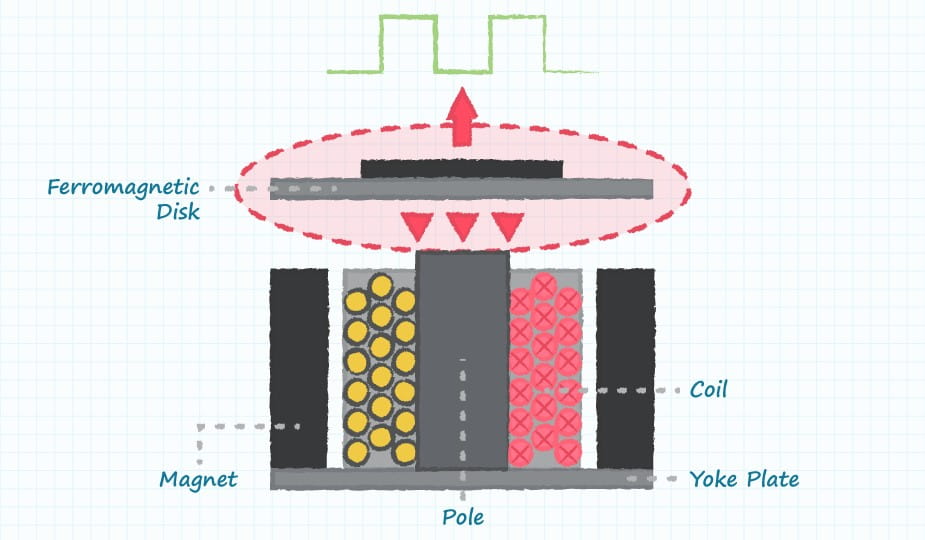
Construction of a typical magnetic buzzer
Piezo buzzers are used in similar applications as magnetic buzzers. Piezo buzzers are constructed by placing electrical contacts on the two faces of a disk of piezoelectric material and then supporting the disk at the edges in an enclosure. When a voltage is applied across the two electrodes, the piezoelectric material mechanically deforms due to the applied voltage. This movement of the piezo disk within the buzzer creates sound in a similar manner as the movement of the ferromagnetic disk in a magnetic buzzer or the speaker cone mentioned above.
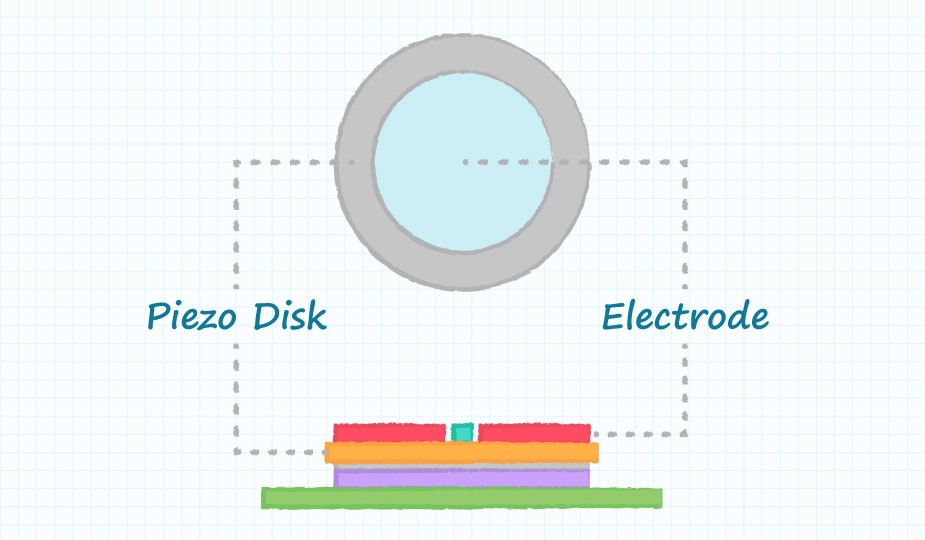
Construction of a typical piezo buzzer
A piezo buzzer differs from a magnetic buzzer in that it is driven by a voltage rather than a current. A piezo buzzer is modeled as a capacitor while a magnetic buzzer is modeled as a coil in series with a resistor. The frequency of the sound produced by both magnetic and piezo buzzers can be controlled over a wide range by the frequency of the signal driving the buzzer. A piezo buzzer exhibits a reasonably linear relationship between the input drive signal strength and the output audio power while a magnetic buzzer's audio output declines rapidly with a decreasing input drive signal.
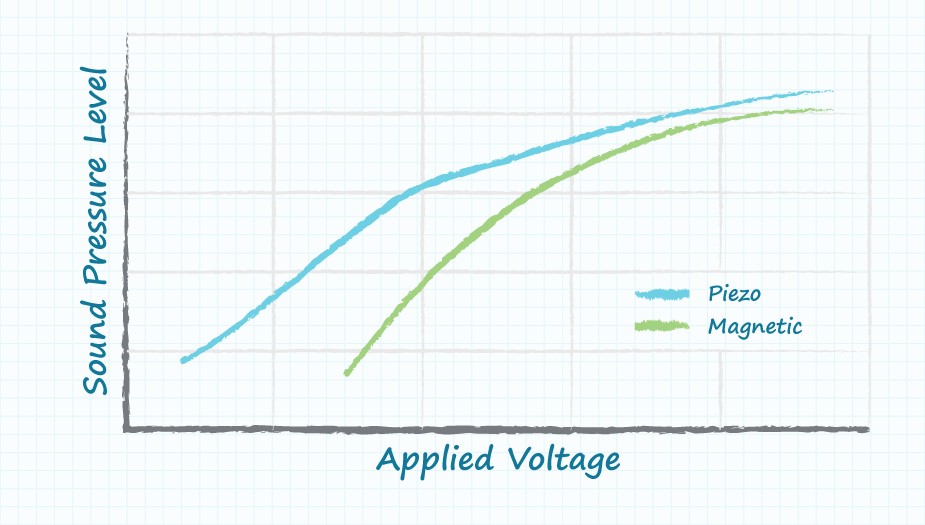
Graph showing the relationship between drive signal and audio output in piezo and magnetic buzzers
Application Circuit for Magnetic or Piezo Indicator

An indicator requires only a dc voltage to operate and sound is produced whenever the voltage is present
Application Circuit for Magnetic Transducer
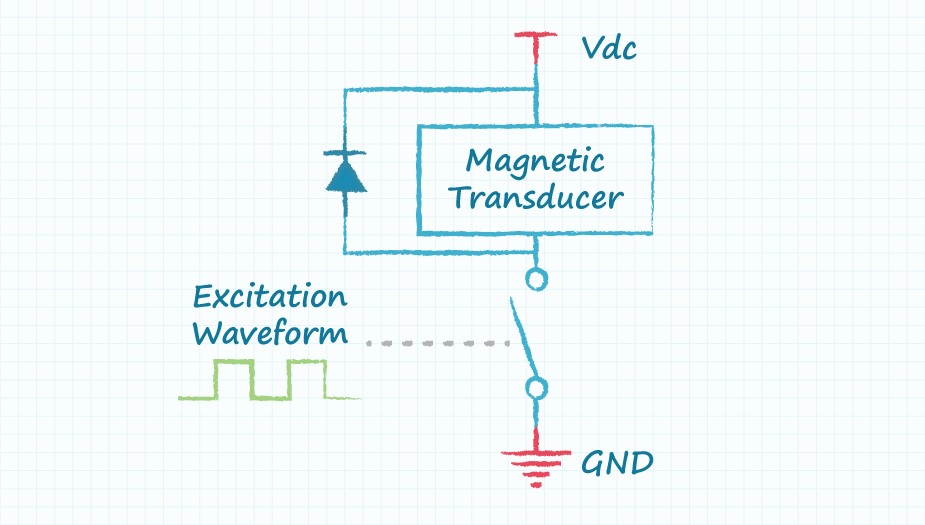
A magnetic transducer requires an excitation waveform to drive the buzzer. Arbitrary wave shapes and a wide range of frequencies can be used for the excitation waveform. The switch in the schematic is used to amplify the excitation waveform and is typically either a BJT or a FET. The diode is required to clamp the fly-back voltage created when the switch (transistor) is shut off quickly.
Application Circuit for Piezo Transducer
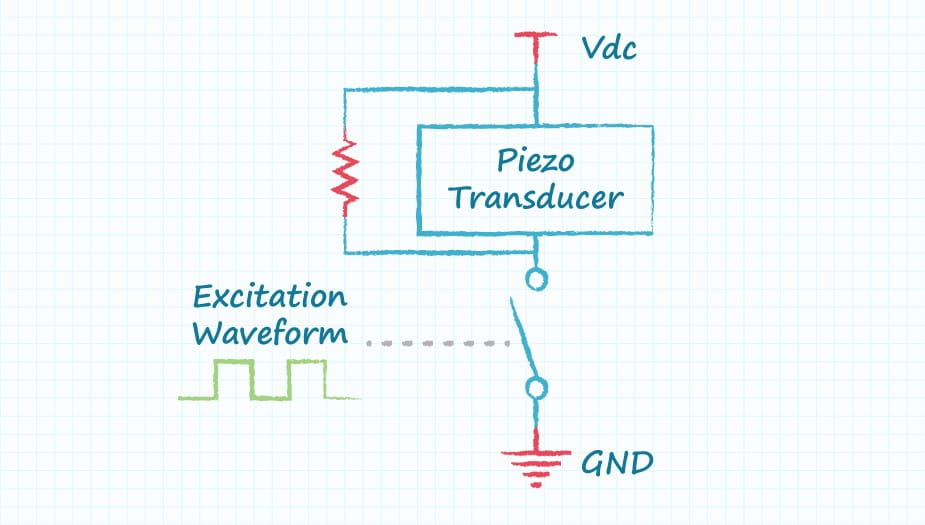
A piezo transducer can be driven with a circuit similar to a magnetic transducer. The diode across the piezo transducer is not required because the inductance of a piezo transducer is small, but a resistor is required to reset the voltage when the switch is open. This circuit is not normally used to drive a piezo transducer because the resistor dissipates power. Other circuits can be used to increase the sound level from a piezo transducer by increasing the peak to peak voltage applied to the transducer.
Full Bridge Circuit for Piezo Transducers
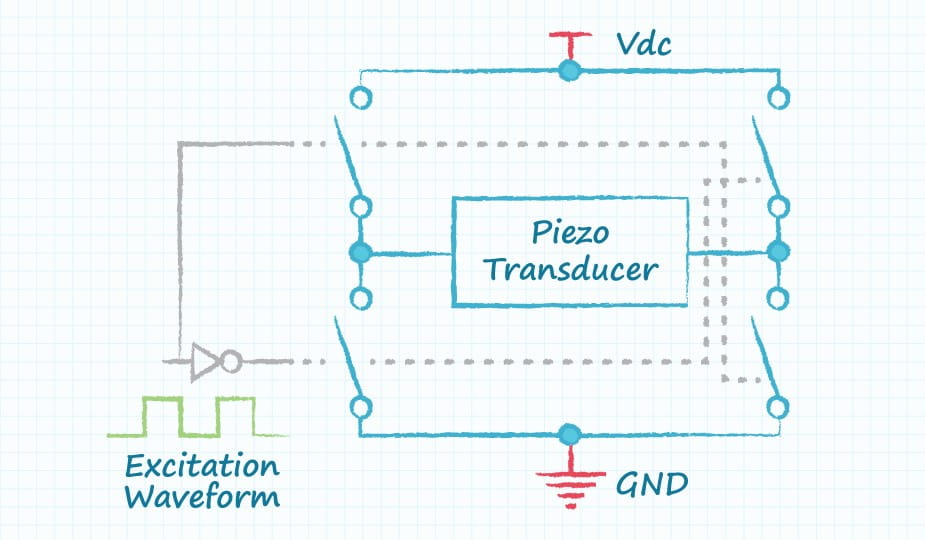
A full bridge circuit is often used for driving piezo transducers. The advantage of using the full bridge comprised of four switches is the peak-to-peak voltage applied across the transducer is twice as large as the available supply voltage. The use of a full bridge driver will cause a resultant increase in the sound volume of about 6 dB due to the doubling of the voltage applied to the transducer.
Conclusion
Buzzers are a simple and inexpensive means of providing communication between electronic products and the user. Piezo and magnetic buzzers are used in similar applications with the primary differences being that magnetic buzzers operate from lower voltages and higher currents than their piezo buzzer counterparts, while piezo buzzers offer users higher SPLs in generally larger footprints. Buzzers configured as indicators require only a dc voltage to operate but are limited to a single audio frequency of operation, whereas transducers require external circuitry, but provide a wider range of audio frequencies.
Shop CUI DEVICES' Magnetic and Piezo Buzzers

